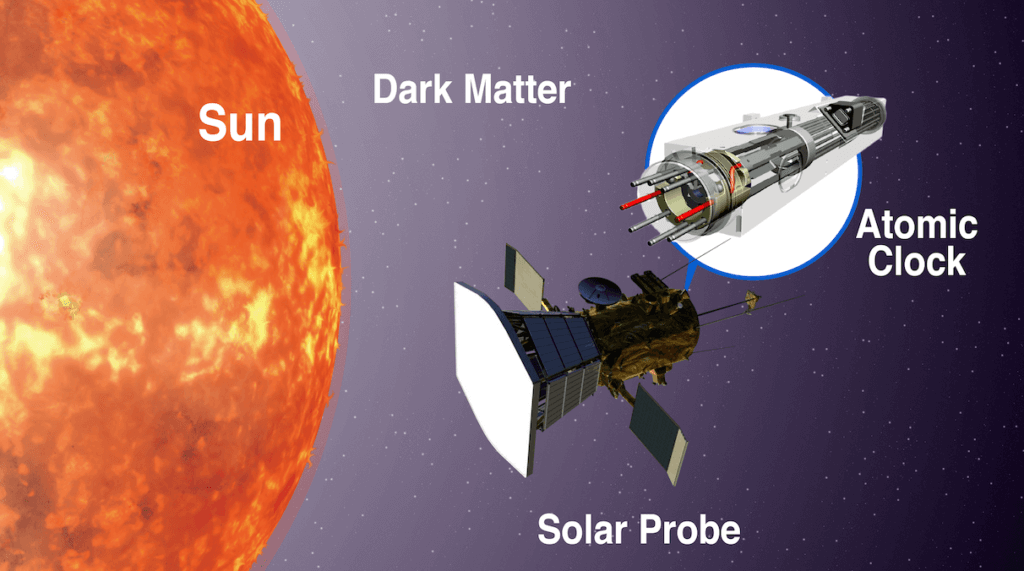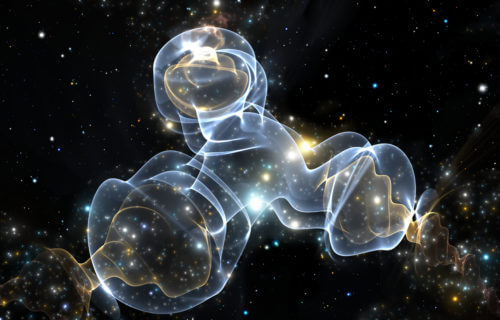KASHIWA, Japan — Scientists recently proposed an unorthodox method for finding dark matter—gazing at a clock. A new study suggests the best way to find elusive dark matter in space by strapping an atomic clock onto a spacecraft inside Mercury’s orbit and very near to the Sun.
Dark matter is estimated to make up over 80% of the total mass in the universe. For something that makes up a big part of our universe, it has yet to actually be seen — though it’s not for a lack of trying. Astronomers and physicists have spent decades coming up with dark matter detection experiments, with little success.
One important component to spotting dark matter is assuming the local density of dark matter particles passing through the detector at any given time. Sometimes, the density could be much higher than initially presumed, while other times dark matter can become more concentrated in some regions than others.
Other experimental attempts involved using atoms or nuclei because they are incredibly sensitive to signals of dark matter. One reason for the high sensitivity is that when dark matter particles have very small masses, they create oscillating signals. The oscillations in the mass of the electron or the interaction strength of the electromagnetic force, alter the transition energies of atoms and nuclei in a predictable pattern.

In this new study, the authors focused on using these oscillating signals for a better chance of detecting dark matter. Their hypothesis is that the region between the orbit of Mercury and the Sun has extremely large dark matter density, which would mean more sensitivity to oscillating signals. These signals could then be picked up by atomic clocks.
Atomic clocks accurately monitor the precise length of a second by measuring the frequency of photons released in atoms transitioning to different energy levels. In the presence of ultralight dark matter, the atomic clocks could modify their frequencies, as the oscillations from dark matter can alter photon energy. “The more dark matter there is around the experiment, the larger these oscillations are, so the local density of dark matter matters a lot when analyzing the signal,” Joshua Eby, a project researcher at the Kavli Institute for the Physics and Mathematics of the Universe and study co-author, in a statement.
Scientists are not completely certain whether being near the sun causes dark matter to have larger densities—the information is based on planetary orbits. However, the study authors argue that even a low-sensitivity search could still bring valuable insight into dark matter.
This theory could become a reality as the spacecraft technology to undergo this research already exists. Since 2018, the NASA Parker Solar Probe has traveled closer to the sun than any other human-made craft in history. With the help of shielding, it’s currently inside the orbit of Mercury and will move closer to the sun in a year.
Beyond looking at dark matter, atomic clocks in space could prove useful for keeping track of time in long space flights. “Long-distance space missions, including possible future missions to Mars, will require exceptional timekeeping as would be provided by atomic clocks in space. A possible future mission, with shielding and trajectory very similar to the Parker Solar Probe, but carrying an atomic clock apparatus, could be sufficient to carry out the search,” adds Eby.
The study is published in Nature Astronomy.
